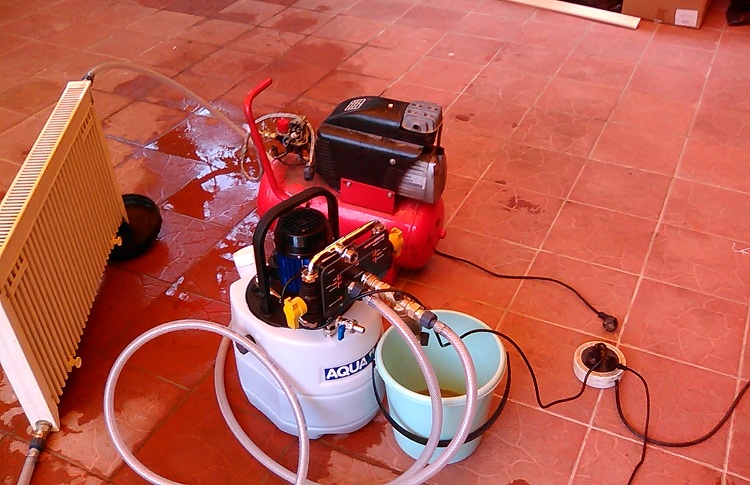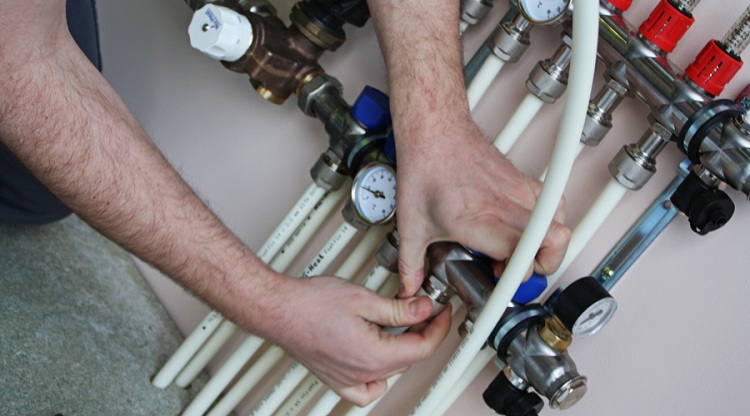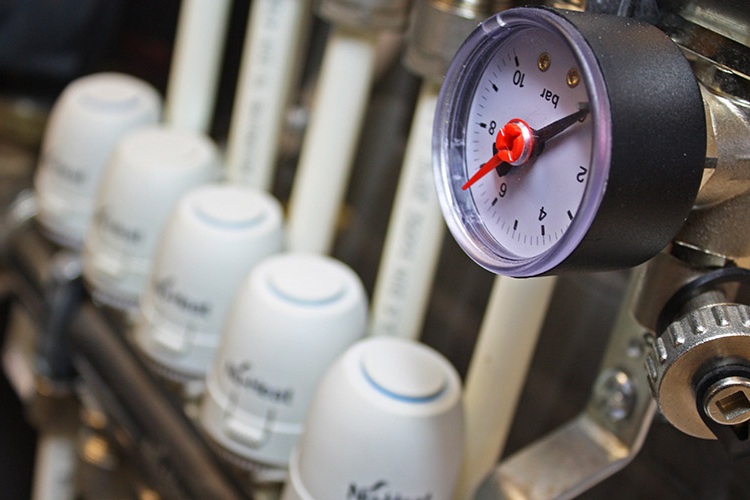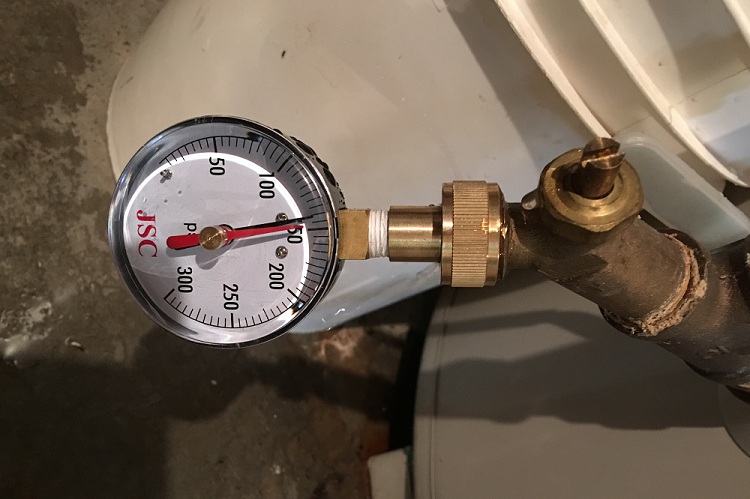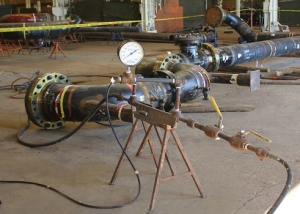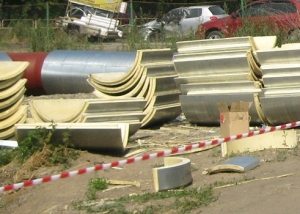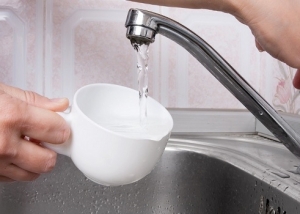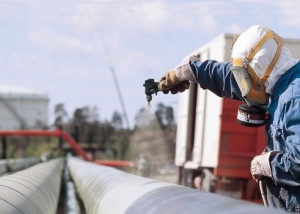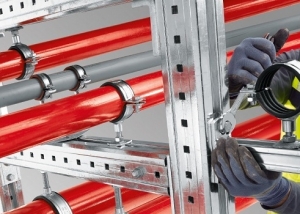The heating system is subjected to heavy loads due to internal pressure and large temperature jumps. After some time, the pipes become clogged with rust and calcium precipitate; they need to be cleaned. Flushing and pressure testing of the heating system is the cleaning and revision of its condition in the intervals between the heating seasons, in accordance with construction norms of SNiP. Preventive work is the most important condition for serviceability and faultless operation in any conditions.
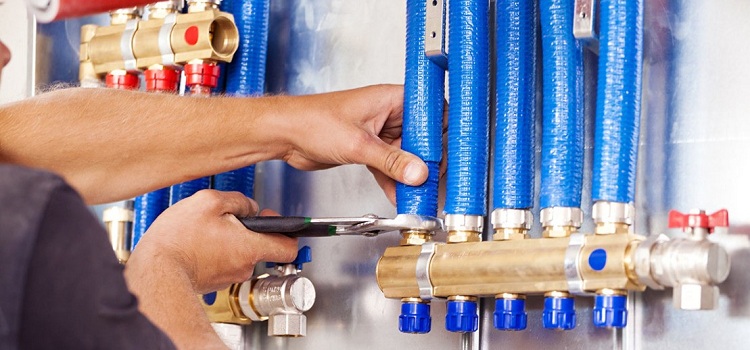
The heating system requires regular inspection and maintenance, one of the mandatory procedures is crimping
Content
What is important to know about flushing and pressure testing of heating
Tightness and a high threshold of working pressure in the plumbing and heating system are important indicators for their effective functioning. Pressure indicators are measured by a manometer during pressure testing and flushing of the heating system. All norms and rules for residential buildings are reflected in the SNiP table.
The level of working pressure directly depends on the number of floors - the more floors there are in a house, the higher the working pressure in the system. It is recommended to pressure test and clean the main with coolant in the case when it is obvious that the pressure exceeds 35-40% or more. Preventive pressure testing is an opportunity to identify defects in pipes and radiators, as well as the shortcomings of their connection. Even with quality installation of pipelines, the pipes become clogged over time.
On the cut of the dismantled pipe, a lumpy precipitate is visible, due to which the clearance is narrowed. These deposits during heating reduce the efficiency of the heating system. Chemical analysis shows that the percentage of sediment in the regions is different. But the basis is:
- hardened calcium;
- rust;
- organic deposits;
- oxides of sulfur, zinc, copper and magnesium.
Plaque increases the total load, making it difficult for hot water to flow on the turning sections of the line, in taps and connecting nodes. Gradually, part of the heating radiators can be so clogged that they are not able to fully function. Precipitation in pipes can lead to cracks and ruptures of joints on any floor.
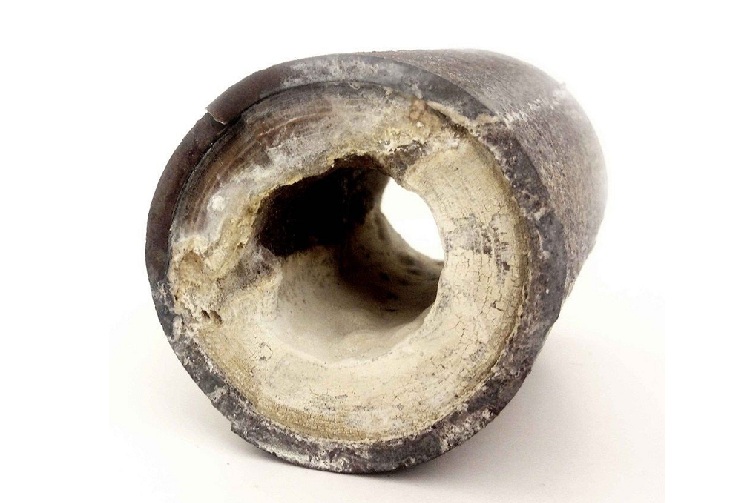
Over time, deposits of various substances accumulate in the pipes, which narrow the lumen and impair the movement of the coolant
Attention! Scheduled flushing and pressure testing of the heating system in city apartments, according to SNiP, should be carried out every 5-7 years.
For hydropressing of private houses, 2 atmospheres is enough, in multi-story buildings, the maximum pressure is up to 6-7 atmospheres. However, working conditions and such pressure are created by a special compressor by specialists, checking the indicators with a manometer and indicators.
In the private sector, similar standards are provided, but in fact, work is carried out much less often - only after the detection of pipeline defects:
- leakage and constant dampness under a radiator or pipe;
- partial or complete depressurization with a “fountain” near the battery;
- gradual clogging of one of the sites, as a result, 1 room remains cold.
Preventive measures guarantee the heat transfer established by the norms of SNiP at the optimum pressure. The good condition of the heating main is its operational efficiency and high heating productivity, as well as lowering the cost of heating buildings.
The main work of the preparatory phase
Before oppressing the heating system in a private house, separate block or apartment, preliminary preparation is required:
- checking the operation of ball valves, valves and other shutoff valves, which, like pipes, are covered with sediment and rust (circulate);
- general disconnection or cut-off from the common trunk through valves and plugs;
- coolant drain;
- change of stuffing box seals;
- preparation of clamps to ensure tightness in case of emergency;
- routine inspection and restoration of thermal insulation:
- leak test of the heating circuit.
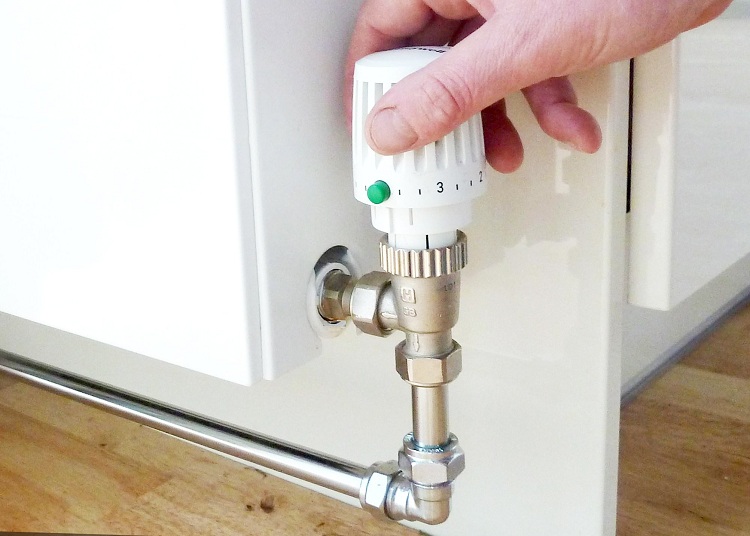
Before starting pressure testing, the coolant is drained from the pipes and radiators of the heating system using taps
The main purpose of pressure testing and flushing the heating system is a preventive check of the heating circuit to detect problem areas and confirm readiness for the new heating season.
- Washing pipes and radiators is carried out in different ways:
- Hydrochemical (special reagents dissolve salts and oxides).
- Bubbling (cleaning the system with compressed air and water with high turbulence).
- Pneumatic shock (displacement of air pollution under pressure for high turbulence).
- Integrated method.
The hydraulic check takes place after the flushing step. The longer the heating systems worked without flushing, the worse the internal walls of the metal pipes.
Process Overview
When pressure testing the heating system, the reliability of all joints, the tightness of the joints of pipes with radiators, are checked. Such work is recommended to be carried out:
- on the eve of putting the new system into operation or upon completion of installation of an additional part of the system;
- in the off-season, before starting the coolant;
- during a period of inactivity (when disconnecting from a common riser);
- after redevelopment, reconstruction or repair;
- when upgrading some units and the entire system;
- at the end of the “dead season”, when disconnection from the general highway was forced during the absence of the hosts or after a forced disconnection for several years.
Purging of contaminants and a test run of the coolant under pressure reveals all the shortcomings of the pipe joint. This preventive method is the ability to prevent an emergency break in the heating season. After flushing the heating systems, it is much easier to maintain their high efficiency at optimal pressure, in accordance with the established norms of SNiP. The equipment in order is a guarantee of economical operation and high heat dissipation and a reduction in the cost of maintaining high temperature in the heating system.
Owners of private houses with autonomous equipment are interested in what pressure testing of a heating system is. The essence of the process is to apply a pressure head of water or compressed air to the system circuit, checking the pressure gauge with indicators. If there is no leak or the air pressure remains the same for 20-30 minutes - no damage.
The main stage of crimping is filling the circuit with tap water or from a drain tap in the "return". It pressurizes air from the radiators and fills all the niches. In some cases, the procedure is repeated several times, especially with a dual-circuit heating system in a private house. A leak is easier to identify the shortcomings of heating systems when the pressure level is 35-50% higher than normal, so specialists use a press and a pressure measuring device (manometer).
Attention! Depressurization rate - pressure drop during a half-hour check when pressure testing of the heating system by air is carried out.
An unreliable connection can be anywhere. The most difficult thing is to find the depressurization unit in closed areas:
- the pipe is masked in the wall or passes through the walls;
- part of the contour is hidden in niches, under skirting boards and drywall constructions;
- heating is “sewn up” with decorative panels;
- the heating circuit hides the built-in furniture.
If the cause of the leak could not be found in open areas, it is necessary to dismantle the structures behind which the pipes are hidden. A small hole in the upper part of the pipe and radiator joint is difficult to detect without supplying water or air under pressure. An emergency fragment rarely occurs on a flat pipe section, most often depressurization is detected on the central heating sections:
- couplings;
- fitting;
- tees and crosses;
- taps and gates;
- other shutoff valves.
The leak is eliminated after the water is drained and the pipeline is cleaned. Then a verification check or repeated pressure testing of the heating is carried out.
What is important to know about flushing pipes and radiators
Pressure testing of the heating system is its “blowing” under pressure, carried out after hydro-prevention. Rinsing, as well as pressure testing, is carried out in 2 stages. Through the drainage holes drain the pollution coming out with the water.
For effective cleaning, a calcium precipitate with an admixture of rust involves loosening with chemical reagents. Part of the silt sediments easily rises in the form of suspension and is removed from the system during crimping in any way. After removing deposits on the inner wall of the pipe, re-flushing is mandatory. There is a possibility that on the turning and narrow sections of the sediment not only did not leave, but also “grabbed” new dirt.
It is interesting! The question often arises - why the equipment worked flawlessly for many years, and when the heating system of the apartment building was being pressurized, a sudden depressurization occurred. The thing is the property of hot water, in which scale is formed, as in an electric kettle. It is able to "patch" small holes that appear from corrosion, replacing rust.
An unreliable "temporary coating" of a rotten pipe is detected by pressure treatment. Sooner or later, water will flow from the problem area during the heating season. Residents often hear a strange noise when filling the system with coolant. This indicates “airy” areas, especially when the battery remains cold after hot water has been supplied. Air congestion is also eliminated under pressure, but air is released on the top floor before launch.
Before flushing, be sure to clean things that can be hopelessly damaged in an emergency. Specialists also recommend paying attention to the sumps at the discharge equipment and at the outlet. This will provide some protection from the accumulated over several years of pollution of heating radiators.
Regardless of the timing of the planned launch of the coolant into pipes according to Construction Norms and Regulations, according to the city or regional schedule, it is recommended to pressurize the heating system in the summer, if there is any doubt about its integrity.
Recommendations for crimping systems
Although this process is easy to master, it is not worth starting work without consulting specialists and appropriate equipment. Optimal will be the help of a person who has some experience in crimping heating systems.
The most difficult thing is to calculate the pressure level, where all factors are taken into account, including the circuit diagram, pipe diameter, service life and time of the last revision.In the private sector, it is important not to harm the basis of the heating circuit - the boiler, so it is cut off with a plug. Old pipes can be destroyed under high pressure, and it is difficult to predict where.
Specialized organizations use chemicals to remove deposits. When purging, the pressure is doubled, observing safety precautions. Upon completion of pressure testing of the heating system, an act is issued in accordance with SNiP, confirming the complete readiness of the circuit for safe operation.
Specialists in the acceptance of heating main equipment should receive a small package of documents, including acts:
- crimping;
- hydrotesting;
- acceptance system.
After prophylaxis, water is added to the circuit, preferably through a filter, so that new dirt does not enter. The filter mesh should not impede circulation.
Scheme of self-washing pressure testing of the heating system
Preventive cleaning of the inner surface of the pipes is carried out before the pressure testing of the heating systems starts, in order to remove from the pipes and radiators all the mud suspension and plaque on the inner wall. All work takes place between two heating seasons.
The heating circuit is filled with water from the water supply with the drain valve open. Rinsing is carried out until the sediment is completely removed, while a clean stream will flow from the drain. This can last from 20 minutes to 2 hours.
The next stage is the hot water run from the boiler, after which it is turned off, and the water is completely drained. The hot stream inside the pipes removes deposits that are not affected by cold water. It is better to do this with acid reagents. In domestic conditions, alkaline environments, such as soda ash, are considered the safest. It is ineffective against calcium deposits, but it well loosens common dirt. Sometimes bleach is used.
Complex contours are washed in parts using plugs and shutoff valves between dirty and cleaned areas. When the process is completed, go to the crimping stage of the heating system to identify weak areas that are prone to depressurization. The circuit must be disconnected from the boiler and pump. All connections must be in good condition, otherwise a break will entail serious repairs.
Attention! With a complex system configuration of several floors, the pressure is increased as it rises to a higher floor.
Pressure testing of the heating system with air involves forcing the flow into the pipes with a special device, and the indicators are checked with a manometer. Most often, in a domestic environment, a mechanical or electric press is used. Recall that in the private sectors, the circuit pressure is made within 2 atmospheres; in urban conditions, higher rates are permissible. Pressure drops with incomplete tightness.
The most vulnerable places are stuffing box gaskets, threaded joints, rusted valves and transitions to the “warm floor” system. Counters, sensors, relays and other equipment are installed at the end of the control crimping.
